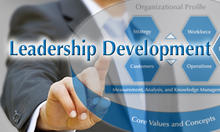Blogrige
The Official Baldrige Blog
What Newton Didn't Tell Us About Inertia.. You Have to Take CARE

A Merriam-Webster definition of inertia is "an indisposition to motion, exertion, or change." Newton's first law of motion is commonly referred to as the law of inertia. Simply stated the law says that a body at rest tends to remain at rest and a body in motion tends to remain in motion with the same speed and direction, unless acted upon by an unbalanced force. But Newton never addressed what happens when that body is an organization. I would propose an organizational version of the law as a complacent organization tends to remain unmoved and an organization focused on incremental improvement tends to continue at the same pace and in the same direction, unless leaders take strategic action to make change. But in the case of organizations the law is incomplete. The leader's proposal of change and even the statement of new direction frequently lead to a lack of action, resistance, or failed action. Why does that happen?
In a recent presentation at a Baldrige Executive Fellows meeting by Sister Mary Jean Ryan, retired Board Chair and CEO of Baldrige recipient SSM Health Care, Sister Mary Jean talked about her early organization as a "system full of inertia." Her challenge to action for SSM resulted in significant beneficial change at SSM. At the Fellows meeting, it resulted in the Baldrige Fellows discussing where inertia resided in their organizations and what the cause of the inertia was. It was a fascinating discussion from which I concluded that there were four reasons why many organizations fail at change, even after a new direction has been stated. It is all about taking CARE (Communication, Alignment, Risk management, and Empowerment).
A complacent organization tends to remain unmoved and an organization focused on incremental improvement tends to continue at the same pace and in the same direction, unless leaders take strategic action to make change
- Communication and the Why
While leaders generally discuss strategic and organizational change proposals with their direct reports, the message does not necessarily get transmitted throughout the organization. Many leaders involve their direct reports (and a few others) in the crafting and decision about the change. Role model leaders gather broader input on significant changes and then communicate the outcome throughout the organization using multiple modes of messaging. Organizational buy-in is achieved through personal two-way communication that includes the very important aspect of explaining the basis for the change. Explaining why is an important step in achieving understanding and commitment. - Alignment
Executing on strategy and change can be confusing to people in the organization without proper alignment. Not only does the organizational structure need to be aligned with the change, but people will expect other important alignment to be convinced and to put muscle behind the strategy. First of all, is the proposed change aligned with your organization's values. This check should be performed before any announcement of change is made. If it is not aligned with your values, consider whether it is an appropriate change and if you should change those values. Next, is it aligned with the organization's vision or is it time to update the vision for the future? Is the change aligned with your core competencies or do you need to develop or partner for new core competencies? Do you need a modification to your work systems to accomplish the change? And finally, are there metrics to gauge success and are those metrics translated down to individual people's actions and accomplishments? - Risk Aversion and Tradition
This barrier to change may well be the most significant, affecting leaders decision making and the organization's willingness to wholeheartedly participate. Particularly, in organizations with a long history of successful operations, tradition is revered and part of the culture. Breaking with tradition is very stressful and can challenge the existing cultural norms. And there is fear of harsh judgment and larger organizational failure if the change is unsuccessful. This is one source of risk aversion as an organizational norm. Large organizations frequently make decisions on a project basis, ignoring the larger benefit of a set of linked decisions. With project-based decision making, one project-based risk avoiding decision could trigger a larger failure and therefore perpetuate a philosophy of risk avoidance, rather than risk management. - Empowerment
To be successful, everyone involved in the change effort must be empowered to carry out their part. They must have the support of leaders and managers to make or suggest adjustments without fear of negative judgment. Employees must be knowledgeable of and invested in the bigger goal to be achieved. They must be empowered to commit reasonable resources and be given the time to invest in making the change. They must have the freedom to interact with people outside their team or normal working environment. As already mentioned, change involves risk, so people must feel comfortable with the potential for failure and the mindset to learn from failure and continue to move forward.
What About Your Organization?
Should your organization be changing at a more rapid pace that you currently are? Are there innovations that are proposed, but not happening? Does your strategic plan just sit on the shelf? Are you too tradition bound in your organization? If you answer yes to any of these questions or related questions, consider your sources of inertia and take it upon yourself to get in motion! Take CARE!
Join a Community of Visionary Leaders

Become a Baldrige Executive Fellow
The Baldrige Executive Fellows Program is a hands-on leadership development program that will propel your organization to higher levels of performance. Learn from a cohort of senior decision makers and Baldrige Award recipients and emerge with a broader perspective on how to achieve performance excellence for your organization, stimulate innovation, and build the knowledge and capabilities necessary for organizational sustainability.
What Executive Fellows Are Saying | Apply Today (2020–2021 cohort)





